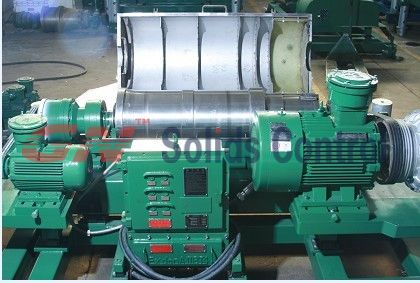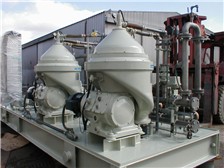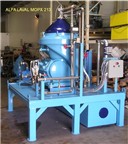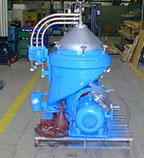source: www.labmanager.com
By: Angelo DePalma
Gas chromatography (GC) has long been the backbone of organic chemical analysis. Most labs involved in organic synthesis or the quantitation of nonpolar organics from food, pharmaceutical, environmental, or forensics samples employ GC as their primary analyzer.
GC was at one time commonly called “GLC,” where the “L” stands for liquid. Inside GC columns are particles of a ceramic or inert material coated with an extremely viscous liquid stationary phase that interacts with the analyte. By contrast, HPLC stationary phases are bonded to the base material. New GCs are sold with software that integrates peaks, stores methods, assists in report writing, and controls instrument functions.
GC detectors have been evolving rapidly to provide greater sensitivity. Flame ionization detectors (FIDs) have been the most widely used, as they detect any molecule containing carbon. FIDs work by burning the sample in a hydrogen flame, ionizing the combustion products, and measuring the resulting current. Numerous other detector types have been introduced over the years, but the most interesting is the mass detector, which is essentially a miniaturized mass spectrometer. Mass detectors provide unequivocal identification of peaks emerging from the chromatograph based on the molecules’ molecular weights and fragmentation patterns.
High-throughput analysis was once associated with commercial labs, but today even academic groups value productivity, says Jim Edwards, business development manager at Thermo Fisher Scientific (Austin, TX). Vendors have done their best to supply instruments that perform faster separations, but this has in turn introduced a detection bottleneck. “Vendors who place a premium on accelerating chromatography should similarly speed up detection to acquire data at a speed appropriate to good precision and performance.” Thermo Scientific accomplishes this by using narrowerbore columns, for example 0.25 mm or 0.18 mm internal diameter, and better managing the sample injection size and thereby the quantity of injected analyte. Less easily achieved is the design of instruments that do not suffer from “fatigue effects,” that is, show signs of slowing down or requiring maintenance after one or two thousand cycles. Maintenance downtime, Edwards observes, is a productivity killer that easily negates the benefits of more rapid analysis or cycling.
Vendors have put a lot of effort over the last decade into GC column technology, particularly to prevent liquid stationary phases from bleeding off the column. Column bleed degrades separation capability and adds to the chemical “noise” detected as both drifting baseline and ghost peaks.
Column developers have introduced more cross-linking into the stationary phase, connecting it more intimately with coated particles and the column itself (similar to HPLC column materials). “Every vendor, across the board, has focused efforts on columns with very low bleed,” Edwards says, “in addition to more unique and proprietary coatings to provide a broad array of separations.”
Removing the bottlenecks
As with HPLC, GC systems have become faster and more selective, to the point where analysts now look to dead times during analytical runs to eliminate inefficiencies. Alessandro Baldi, business manager for chromatography software at PerkinElmer (Waltham, MA), cautions that this is best achieved by avoiding changes that will disrupt workflows or force analysts to alter established methods.
Oven equilibration is one obvious bottleneck. PerkinElmer tackled equilibration by designing an oven with very low mass that is cooled down rapidly and uniformly by fast-moving, nonrecirculated air. It is also possible to achieve efficiencies in heating.
Next the company went after autosampling by implementing lookahead functions. “It takes time to inject, clean the needle, and load and unload the sample,” Baldi says. In an optimal configuration, the autosampler engages not at the precise moment it is needed, but when the oven is almost at the right temperature. “With these two ideas one can minimize, as much as possible, oven equilibration and dead time.”
A third approach is to integrate the GC with sample prep devices in ways that provide greater flexibility and less of a hardwired configuration. PerkinElmer has its own systems for head space analysis and desorption but has recently collaborated with Tekmar (Mason, OH) on purge-and-trap sample concentration and with CTC (Zwingen, Switzerland) on solidphase microextraction. “The goal,” Baldi tells Lab Manager Magazine, is to minimize sample preparation.
Huge reductions in per-injection cycle times may be achieved through the use of flow-splitting techniques that divert eluent to multiple columns or post column to one of several detectors. Agilent, Shimadzu, and PerkinElmer have all introduced their own products in this area. Splitting allows analysts to switch columns or detectors on the fly without having to turn off the instrument, allow components to cool down, and swap them out. In essence, splitting creates “multiple” chromatographs from one instrument.

Angelo DePalma holds a Ph.D. in organic chemistry and has worked in the pharmaceutical industry. You can reach him at angelo@ adepalma.com.
GC Systems: Are you using a gas chromatography system in your lab? Are you considering purchasing a gas chromatography system soon? Lab Manager Magazine’s online surveys help improve the purchasing process and provide you with greater confidence in your final purchasing decision. To take the survey, please visit www.labmanager.com/surveys/gcsystems.












